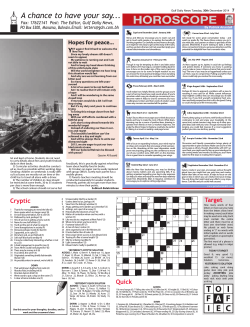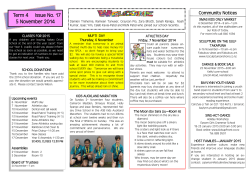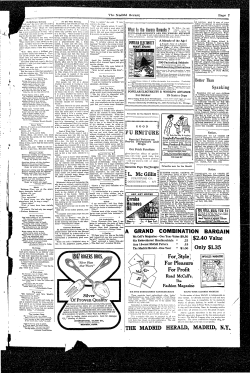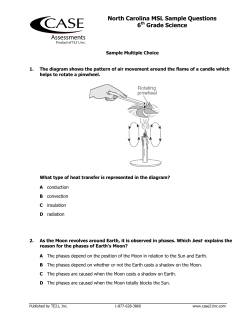
ASTRONOMY 4
FAMILY NAME : ________________________________ (Please PRINT!) GIVEN NAME : ________________________________ (Please PRINT!) Signature: __________________________________ ASTRONOMY 4 DeAnza College Fall 2014 Second Midterm Exam MAKE ALL MARKS DARK AND COMPLETE. Instructions: 1. On your Parscore sheet (using a #2 pencil): a. Write and fill in the bubbles for your 8-digit ID number. Leave the right-most two columns blank. b. Fill in the “A” bubble in the “TEST FORM” column. c. Write and bubble in your name in LastName FirstName form (i.e. family name then given name separated by a space). Don’t leave any blank spaces on the left. d. Leave blank: areas for phone number, exam number, and code. 2. Please print your name and sign your name in the appropriate spaces at the top of this page. 3. This is a closed-book, closed-notes exam. No reference materials of any kind are to be used during the exam. 4. Your exam should have five pages (including this one). Please check to make sure that it does. 5. Mark your answers on this booklet as well as filling in the bubbles on your Parscore sheet. 6. Turn in your Parscore sheet inside your exam booklet. Good luck! 1 On your Parscore sheet: A = A correct answer (“True”) B = An incorrect answer (“False”) You are to mark at least one answer “True” in each lettered question group. A. Which of the following is/are true about the Kepler mission? T F 1) It discovered thousands of exoplanets. T F 2) It detected only about ten exoplanets, all much bigger than Earth. T F 3) It searched the entire sky for nearby stars that might have planets. T F 4) It lasted about twenty years. T F 5) It concentrated on one small part of the sky looking for tiny variations in stars’ light. B. If you looked back at the Earth from the Moon when the Moon was in its waxing crescent phase, what phase would the Earth appear to be in? T F 6) first quarter T F 7) third quarter T F 8) waxing gibbous T F 9) waning gibbous T F 10) trick question – the Earth doesn't have "phases." C. If you see the Moon rising at about noon, which of the following describes how it looks? T F 11) a thin crescent T F 12) a fully-illuminated ball (full moon) T F 13) one half of the side toward us is illuminated T F 14) It could have any appearance, since when it rises and how it looks are not related to each other. D. What is the moon's phase when a lunar eclipse happens? T F 15) first quarter T F 16) full T F 17) third quarter T F 18) new T F 19) A lunar eclipse can happen during any phase of the moon. E. An "annular eclipse" T F 20) is an eclipse in which the Moon covers only the central part of the Sun, leaving a ring (or "annulus") of bright light around the Moon's silhouette. T F 21) occurs once a year. T F 22) can happen if the Moon is at perigee. T F 23) can happen if the Moon is at apogee. F. Which one(s) of the following describe a situation in which the Moon can be seen in the daytime? T F 24) first quarter moon at 4 p.m. T F 25) waxing gibbous moon just before sunset. T F 26) third quarter moon at 9 a.m. 2 G. What phase(s) of the moon comes between first quarter and waning gibbous in one lunation? T F 27) third quarter T F 28) waxing crescent T F 29) full moon T F 30) waning crescent T F 31) waxing gibbous. H. Which of the following is/are true about the moon? T F 32) The first quarter moon is highest in the sky at about sunset. T F 33) The full moon is highest in the sky at about midnight. T F 34) The third quarter moon rises at about midnight. T F 35) When the moon rises or sets or is highest in the sky does not depend on its phase. I. What is the "angular momentum problem"? T F 36) According to the nebular hypothesis, the Sun should have most of the angular momentum of the Solar System, but it doesn't. T F 37) According to the nebular hypothesis, the planets should have most of the angular momentum of the Solar System, but they don't. T F 38) The Moon should be rotating and revolving faster than it is. J. What evidence do we have that disks of gas and dust are common around young stars? T F 39) Such disks are observed directly in many cases (for example, by the Hubble Space Telescope). T F 40) Numerical simulations (“computer models”) predict them, but our technology isn’t capable of detecting them directly yet. T F 41) There is no such evidence. K. Which of the following is/are Jovian planets? T F 42) Jupiter T F 43) Uranus T F 44) Saturn T F 45) Neptune T F 46) Pluto L. Comparing Terrestrial and Jovian planets, T F 47) Jovians all rotate faster than Terrestrials do. T F 48) Terrestrials are all denser than Jovians are. T F 49) Terrestrials all have more satellites than Jovians do.. M. All of the major planets T F 50) orbit the Sun in the same direction. T F 51) spin on their axes in the same direction. T F 52) orbit in about the same plane as the Sun's equator. 3 N. What is the “ice line” (or “snow line”)? T F 53) the distance from a star beyond which planets like Jupiter are expected to form. T F 54) the distance north or south of a planet’s equator within which water can be expected to remain liquid. T F 55) a kind of formation on a planet’s surface that proves that glaciers used to exist there. O. How are astronomers able to explore the layers of the sun below the photosphere? T F 56) By analyzing vibrations of the photosphere. T F 57) Through "helioseismology." T F 58) By sending spaceprobes into the sun's interior. T F 59) Trick question – the photosphere is part of Earth, not part of the sun. P. Which of the following did Galileo discover about the Sun? T F 60) He discovered sunspots. T F 61) He discovered that the Sun rotates. T F 62) He discovered the Zeeman effect. T F 63) He discovered the heliopause. Q. What did George Ellery Hale discover about sunspots in June, 1908? T F 64) He discovered that they come and go in an 11-month cycle. T F 65) He discovered that they are holes in the photosphere caused by the impacts of giant comets. T F 66) He discovered that their spectra showed evidence of strong magnetic fields. T F 67) He discovered that they are actually regions of hot gas elevated above the photosphere. R. What element(s) was/were discovered on the Sun before being discovered on Earth? T F 68) hydrogen T F 69) helium T F 70) calcium T F 71) titanium S. Which of the following is/are phenomena of the solar surface? T F 72) prominences T F 73) flares T F 74) sunspots T F 75) nuclear energy generation T. What is a planetesimal? T F 76) “Planetesimal” is another word for a satellite (moon) going around a planet. T F 77) It was a small body that formed from the solar nebula and eventually grew into a proto-planet. T F 78) It is a disk of dusty material seen in Hubble Space Telescope pictures of nearby stars. T F 79) “Planetesimal” is another word for particles that escape from the solar system. 4 U. Which of the following was/were used in the Kepler project to discover exoplanets? T F 80) The “wobble” method. T F 81) The “transit” method. T F 82) Using very high magnification to see little planets around other stars. T F 83) Measuring minute changes in a star’s speed. T F 84) Detecting minute changes in a star’s brightness. V. Galileo used his observations of the changing phases of Venus to demonstrate that T F 85) the Sun moves around the Earth. T F 86) the Universe is infinite in size. T F 87) the Earth is a sphere. T F 88) the Moon orbits around the Earth. T F 89) Venus follows an orbit around the Sun rather than around the Earth. W. Which of the following is/are true about the terms rotation and revolution? T F 90) Rotation means spin on an axis T F 91) Revolution means orbiting around something else T F 82) The Earth’s revolution period is one year T F 93) The two terms mean the same thing. X. Which of the following is/are true about motions in the solar system that cause changes in the sky as seen from Earth? T F 94) Earth rotates counterclockwise as seen from the North. T F 95) Earth revolves counterclockwise as seen from the North. T F 96) The Moon revolves counterclockwise as seen from the North. T F 97) The planets revolve counterclockwise as seen from the North. Y. Which of the following do you live in? T F 98) the Milky Way Galaxy. T F 99) the Solar System. T F 100) the Local Group. PLEASE TURN IN YOUR EXAM WITH YOUR PARSCORE INSIDE THIS EXAM BOOKLET. 5
© Copyright 2025














